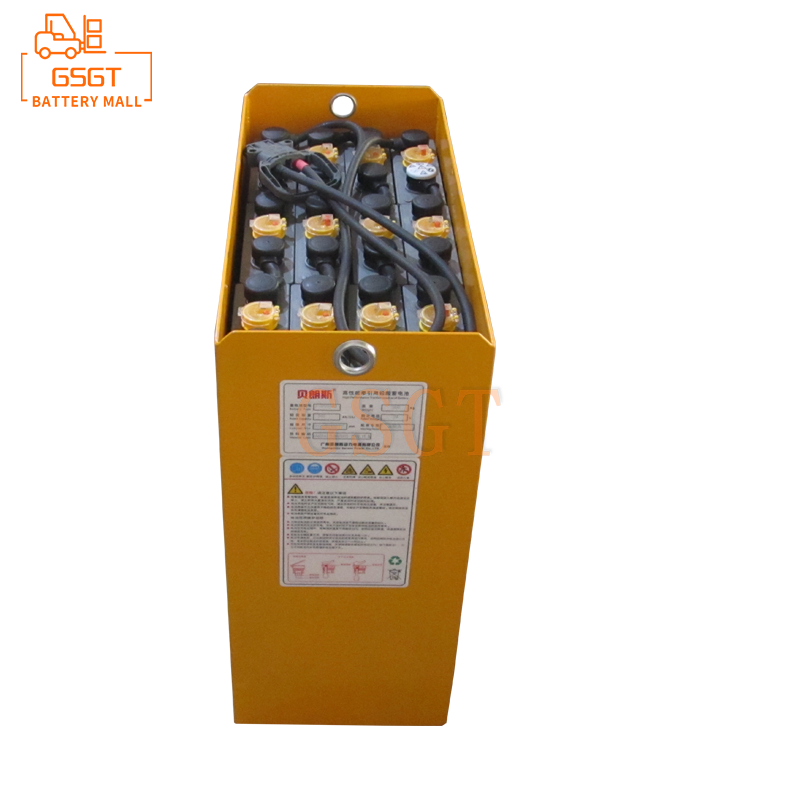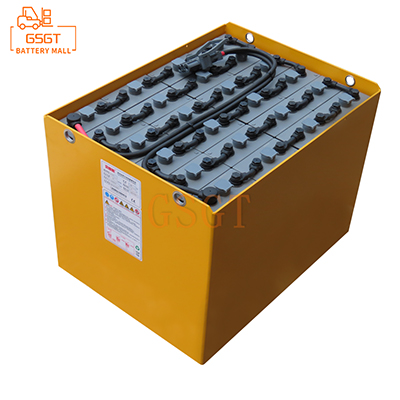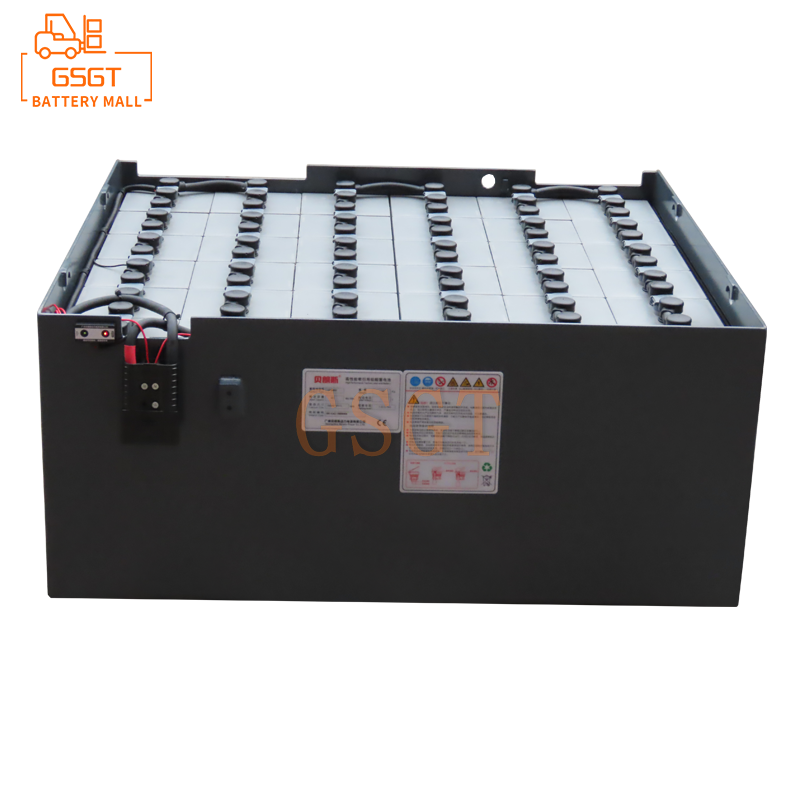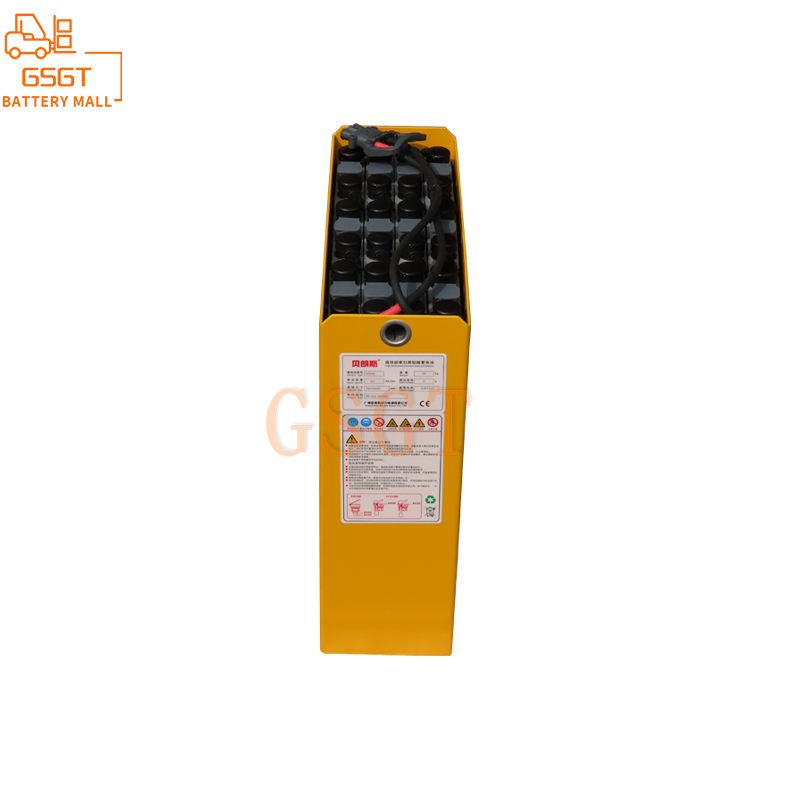Time:2025-04-25 09:59:22
Browse:737
In the modern logistics and warehousing field, forklifts, as indispensable handling equipment, their power sources play a decisive role in work efficiency and operating costs. Lead-acid batteries, with their unique performance advantages, have become one of the important choices for forklift power. This article will deeply analyze the performance advantages of lead-acid batteries for forklifts and elaborate on the key points for selection in detail, providing valuable references for relevant enterprises and practitioners.
1. Performance Advantages of Lead-Acid Batteries for Forklifts
(1) Significant cost advantage
The raw materials for lead-acid batteries are abundant and relatively inexpensive, mainly composed of lead and its oxides, sulfuric acid, etc. These raw materials are in abundant supply in the market, which makes the production cost of lead-acid batteries relatively low. Compared with other types of storage batteries, such as lithium batteries, the initial purchase cost of lead-acid batteries can be about 30% to 50% lower. For small and medium-sized enterprises with limited capital budgets, lead-acid batteries can meet the basic usage requirements of forklifts with relatively low investment, reducing the financial pressure on enterprises in equipment procurement.
(2) The technology is mature and reliable
Lead-acid batteries have a development history of over 150 years, and their manufacturing technology has become quite mature. The production process is stable and the product quality is reliable. The manufacturer has accumulated rich experience in the manufacturing process and can effectively control the quality and performance of the products. In the daily use of forklifts, lead-acid batteries can stably provide power and rarely encounter malfunction problems caused by immature technology. Meanwhile, due to its high technical popularity, maintenance personnel are quite familiar with the structure and principle of lead-acid batteries. Once a fault occurs, the repair difficulty is relatively low and the repair cost is also relatively controllable.
(3) Strong high-current discharge capacity
When a forklift starts, accelerates and moves heavy objects, it needs to provide a large current instantaneously. Lead-acid batteries have excellent high-current discharge performance and can meet the power demands of forklifts under these working conditions. It can release a large amount of electrical energy in a short time, enabling the forklift to start quickly and lift goods, ensuring the efficient operation of the forklift in complex working environments. In contrast, some other types of batteries may have certain limitations in high-current discharge and cannot provide strong power support for forklifts like lead-acid batteries.
(4) It has good temperature adaptability
Lead-acid batteries can operate normally within a certain temperature range. Although its performance will decline in low-temperature environments, through appropriate insulation measures, such as adding insulation covers, it can still maintain a certain working capacity in an environment ranging from -20℃ to 50℃. In some logistics and warehousing sites where temperature requirements are not particularly strict, lead-acid batteries can adapt to the environmental temperature changes in different seasons, ensuring the normal operation of forklifts without the need for complex temperature regulation systems like some batteries, reducing usage costs and equipment complexity.
(5) The recycling system is well-developed
Lead-acid batteries are among the batteries with the most complete recycling system at present. The recovery rate of lead is as high as over 95%. Through standardized recycling processes, substances such as lead and sulfuric acid in used lead-acid batteries can be effectively recycled and reused, reducing environmental pollution and achieving the recycling of resources at the same time. For enterprises, a standardized recycling system not only meets environmental protection requirements but also can reduce the cost and risk of used battery disposal to a certain extent.
2. Key Points for Selecting Lead-Acid Batteries for Forklifts
(1) Clarify the usage requirements of the forklift
1. ** Work Intensity ** : Based on factors such as the daily working hours of the forklift, the weight and frequency of the goods being handled, determine the required capacity of the battery. If the forklift has a high working intensity, operates for more than 8 hours a day, and frequently handles heavy goods, a battery with a larger capacity should be selected to ensure that the forklift has sufficient power throughout its entire working cycle. Generally speaking, for forklifts operating at moderate intensity, a battery of around 48V and 400Ah can be selected. For forklifts operating at high intensity, batteries with a capacity of 80V and 600Ah or more may be required.
2. ** Working Environment ** : Consider the working environment conditions of the forklift, such as temperature, humidity, dust, etc. In high-temperature environments, batteries with good high-temperature resistance should be selected to avoid a decline in battery performance and a shortened lifespan due to excessive temperatures. In damp or dusty environments, it is necessary to choose batteries with good sealing performance to prevent electrolyte leakage and dust from entering the battery interior, which could affect the normal operation of the battery.
(2) Pay attention to the key parameters of the battery
1. ** Rated capacity ** : It is an important indicator for measuring the battery's ability to store electricity, with the unit being ampere-hours (Ah). The larger the rated capacity is, the more electricity the battery can store, and the stronger the forklift's endurance will be. However, it should be noted that in actual use, due to the influence of various factors, the actual discharge capacity of the battery will be lower than the rated capacity. Therefore, when making a purchase, a certain capacity margin should be appropriately reserved based on the actual needs of the forklift.
2. ** Voltage ** : Common voltage specifications for forklift lead-acid batteries include 24V, 48V, 80V, etc. The selection of voltage should be matched with the motor and electrical control system of the forklift to ensure its normal operation. Batteries of different voltages also vary in performance and application scenarios. Generally speaking, the higher the voltage, the greater the output power of the battery, making it suitable for forklifts that handle heavy goods and have a high work intensity.
3. ** Cycle life ** : It refers to the number of charge and discharge cycles that a battery can complete under certain charge and discharge conditions. The longer the cycle life is, the longer the battery's service life will be, and the lower the frequency of battery replacement will be, thereby reducing the usage cost. When making a purchase, priority should be given to choosing batteries with a long cycle life.
4. ** Self-discharge rate ** : It refers to the rate at which a battery loses electricity due to internal chemical reactions when it is in an open-circuit state. Batteries with a low self-discharge rate can maintain their power for a relatively long time during storage, reducing the frequency and time cost of charging. For forklifts that are not frequently used, it is particularly important to choose batteries with a low self-discharge rate.
(3) Choose reliable brands and suppliers
1. ** Brand reputation ** : Lead-acid batteries from well-known brands are usually more reliable in terms of product quality, performance and after-sales service. Brand enterprises often have strict production standards and quality control systems, which can ensure that their products comply with relevant industry standards and norms. For instance, some internationally renowned brands and large domestic battery manufacturing enterprises have accumulated a good reputation in the market. Their products have been tested by a large number of users in practice and are of reliable quality.
2. ** Supplier Service ** : It is crucial to choose a supplier with good after-sales service. High-quality suppliers can offer timely technical support, repair services and battery maintenance guidance to help users solve various problems encountered during use. Meanwhile, suppliers should also have a complete logistics and distribution system to ensure that the batteries can be delivered to users in a timely and safe manner. When making a purchase, you can learn about the service quality of the supplier by consulting other users, checking the supplier's reviews and other means.
(4) Check the appearance and quality of the battery
1. ** Visual Inspection ** : Carefully check whether the battery casing is intact and undamaged, and whether there are any cracks, deformations, etc. The casing should have good sealing performance to prevent the leakage of the electrolyte. Check whether the terminal blocks of the battery are firm and free from corrosion. The surface should be smooth and free of oxidation. In addition, it is necessary to check whether the labels on the battery are clear and complete, including information such as brand, model, rated capacity and voltage.
2. ** Quality Inspection ** : When conditions permit, the supplier can be requested to provide a quality inspection report of the battery to understand whether the various performance indicators of the battery meet the requirements. The quality condition of the battery can also be initially judged through some simple testing methods, such as measuring the battery's voltage and internal resistance. Under normal circumstances, the voltage of a new battery should be close to its rated voltage, and the internal resistance should be within a reasonable range.
(5) Consider the supporting equipment and costs
1. ** Charging Equipment ** : Lead-acid batteries need to be charged with corresponding chargers. When choosing a battery, it is necessary to understand its requirements for charging equipment, such as charging voltage, current and other parameters. Choosing a high-quality charger that matches the battery not only improves the charging efficiency but also extends the battery's service life. At the same time, the purchase cost and usage cost of the charging equipment should be taken into account, such as electricity consumption and equipment maintenance.
2. ** Maintenance Cost ** : Lead-acid batteries require regular maintenance during use, such as replenishing electrolyte and checking the liquid level height of the battery. The maintenance requirements and costs of different types and brands of batteries also vary. When making a purchase, one should understand the maintenance methods and cycles of the battery, and choose a battery that is relatively easy to maintain and has a lower cost. In addition, the cost of recycling and processing used batteries should also be taken into account, and suppliers that meet environmental protection requirements and have lower recycling costs should be selected.
To sum up, forklift lead-acid batteries have many performance advantages such as low cost, mature technology and strong high-current discharge capacity, and occupy an important position in the field of forklift power. When choosing lead-acid batteries for forklifts, it is necessary to comprehensively consider multiple factors such as the usage requirements of the forklift, key parameters of the battery, brand and supplier, appearance quality, as well as supporting equipment and costs. Through scientific and reasonable selection, choose high-quality batteries that meet your own needs, thereby improving the working efficiency of the forklift, reducing operating costs, and achieving efficient and sustainable development of the enterprise. Meanwhile, with the continuous advancement of technology, the performance of lead-acid batteries is also constantly improving and optimizing, and they will continue to play an important role in the field of forklift power in the future.

$1105

$3405

$4045

$1270

MESSAGE
Professional And Efficient
Security
Affordable Price
Professional Services